Nuclear Arms Race Threatens the World
We are now closer to global catastrophe than we have been for nearly seventy years.
Since the decision by the United States to use an atomic weapon against Japan in 1945, nuclear weapons have been thought of as the technology that could one day wipe out humanity.
Today, nuclear weapons are making a comeback.
While the media have you focused on other things – stock market, police brutality, leaked celebrity photos – countries around the world have been contributing to a renewed nuclear arms race.
The Nuclear Participants
For years, North Korea has loudly announced working on nuclear weapons technologies that could one day be targeted at the U.S.
As I wrote in my Letter, “A Nuclear Threat“:
“…North Korea’s National Defense Commission not only called the United States the “archenemy of the Korean people,” but directly threatened the United States with nukes:
“We are not hiding that a variety of satellites and long-range rockets will be launched, and a high-level nuclear test will be carried out in the new phase of the anti-US struggle, targeting the US, the sworn enemy of the Korean people.
…We will launch an all-out action to foil the hostile policy toward the Democratic People’s Republic of Korea being pursued by the US and those dishonest forces following the US, and safeguard the sovereignty of the country and the nation.
…Settling accounts with the U.S. needs to be done with force, not with words.”
Last Wednesday, North Korea said that it had already built nuclear weapons small enough to be carried by missiles.
While officials and analysts in in the U.S. and South Korea continue to downplay how close North Korea has come to acquiring a nuclear weapon small enough to be put on a missile or even its ability to deliver a nuclear warhead on an intercontinental ballistic missile, there’s something they haven’t mentioned: North Korea has help.
It’s something I talked two years ago.
Via the Equedia Letter, “A Nuclear Threat“:
“While you may have heard about North Korea’s threats, the media hasn’t told you the scariest part: Iran’s involvement.
Open Source Intelligence (OSINT) is now suggesting that as many as 100 Iranian nuclear weapons technicians and scientists are now in North Korea after an agreement was signed last year between the two countries that focused on scientific and technological cooperation. This comes on the heels that news of last month’s rocket launch was assisted by Iran.”
Iran and North Korea have been working together on numerous ballistic missile programs, going back to the eighties.
So while North Korea may not have the resources or the know-how to create a nuclear weapon, Iran certainly does.
Here’s the scary part: Iran has already been working on atomic weapons and advanced implosion technology small enough weapon to fit on – you guess it – North Korean-supplied ballistic missiles.
Iran has advanced atomic weapons technology; North Korea has advanced ballistic missiles to launch them. It’s a match made in hell.
What do you think of Iran and Korea’s relationship? Is North Korea bluffing or do they have nuclear weapons capable of reaching the US?
Slowing Iran’s Nuclear Advancement
Last month, foreign ministers from the US, the UK, Russia, China, France, plus Germany (known as the P5 + 1 nations) and Iran announced they reached a ‘historic’ framework agreement regarding Iran’s nuclear program and the lifting of international sanctions. This agreement is slated to conclude by the end of June.
If the deal goes through, it won’t necessarily prevent Iran from obtaining a nuclear weapon, but it would prevent it from either getting one very quickly or clandestinely (in secret).
Just over a month remains until the deadline to finalize the historic agreement. So how are things progressing?
Not good.
One of the key points of the agreement is to prevent Iran from being able to build a nuclear weapon in secret. In a statement last month, US President Obama asserted:
“…Iran has also agreed to the most robust and intrusive inspections and transparency regime ever negotiated for any nuclear program in history. So this deal is not based on trust, it’s based on unprecedented verification.”
Not so fast Obama.
Just last week, Iran’s supreme leader vowed he will not allow international inspection of Iran’s military sites or access to Iranian scientists under any nuclear agreement with world powers.
Via Fox News:
“Ayatollah Ali Khamenei told military commanders Wednesday that Iran will resist “coercion and excessive demands” from America and other world powers.
… A fact sheet on the framework accord issued by the U.S. State Department said Iran would be required to grant the U.N. nuclear agency access to any “suspicious sites.”
But Khamenei indicated that the Americans are increasing their demands that international inspection of Iran’s military sites and interviews with Iranian scientists be included in the final deal.
“The impudent and brazen enemy expects that we allow them talk to our scientists and researchers about a fundamental local achievement but no such permission will be allowed,” Khamenei told military commanders in Tehran Wednesday, in remarks broadcast on state TV. “No inspection of any military site or interview with nuclear scientists will be allowed.”
In other words, since Iran won’t give access for inspections, Iran will still be able to create nuclear weapons in secret – which may already be the case, anyway.
Is Iran Already Building Nuclear Weapons?
Less than a month ago, Britain informed a United Nations sanctions panel of a large clandestine active Iranian nuclear procurement network linked to two blacklisted firms.
Via Reuters:
“The UK government informed the Panel on 20 April 2015 that it ‘is aware of an active Iranian nuclear procurement network which has been associated with Iran’s Centrifuge Technology Company (TESA) and Kalay Electric Company (KEC)’,” the Panel of Experts said in its annual report. The panel monitors Iran’s compliance with the U.N. sanctions regime.
…Iran, which is has been under sanctions for years, has a long history of illicit nuclear procurement using front companies and other methods of skirting sanctions. That has enabled it to develop a substantial atomic program in spite of aggressive international efforts to curtail it, U.N. diplomats say.”
But that’s not all.
It’s been reported that Iran has received significant help from many countries around the world including China, Russia, India, South Africa, and North Korea.
Is South Africa Helping Iran’s Nuclear Weapons Ambition?
In the early nineties, South Africa had secretly produced at least eight working atomic bombs at Valindaba, the heart of South Africa’s nuclear weapons programme.
The nation was also seeking to develop or acquire technology to produce smaller warheads that could be mounted on their RSA-2 multi-stage missiles (just like North Korea claims it has).
While the facilities have since been shut down, South Africa maintains all of the technology developed during those times. Last October, South Africa began talks of restarting Valindaba.
Then, just a few months later, Al Jazeera revealed that Iran had infiltrated South Africa at multiple levels through an intricate network of individuals, businesses, and cultural groups.
Iran had apparently also started cooperation on nuclear technology, including a reported meeting between Hassan Rouhani, then-head of the Supreme National Security Council of Iran and now Iran’s president, and South African President Thabo Mbeki.
Could the discussions of restarting Valindaba be related to Iran’s nuclear ambitions?
Click Here to Share Your Thoughts
Regardless of that answer, the important subject line is this: both Iran and North Korea could be, or already may be, armed with nuclear weapons capable of reaching international targets.
Here’s the scary part: don’t think Iran or N. Korea’s enemies will sit idle.
The Domino Effect: Saudi Arabia
Since the “historic” agreement doesn’t prevent Iran from producing nuclear weapons, Saudi Arabia, and other smaller Arab states have openly promised to match the nuclear enrichment capabilities Iran is allowed under a possible deal with the West.
Last week, according to the Sunday Times, Saudi Arabia had already taken the “strategic decision” to acquire “off-the-shelf” atomic weapons from Pakistan.
Since supplying nuclear arms to any country is a big political no-no, Pakistan immediately dismissed those claims:
Via India Times:
“Pakistan’s nuclear programme is meant for its security and there is a strong command and control system over it. Pakistan is aware of its responsibilities as a nuclear state,” Khalillulah said, rejecting the ‘Sunday Times’ report about a nuclear deal between Pakistan and Saudi Arabia.
Khalillulah pointed out that there has been an “entirely baseless and mischievous campaign in the international media about Pakistan’s indigenous nuclear programme.”
But could there be some truths to the allegations?
Pakistan and Saudi Arabia have one of the closest relations of any two countries and have forged vital partnerships over the years. One former Saudi intelligence chief quoted their relations as “probably one of the closest relationships in the world between any two countries.”Pakistan also has a long history of fighting Saudi Arabia’s wars and there’s likley a lot of “favours” owed by each country to one another.
For example, via Voice of America:
“After Pakistan tested its nuclear device and was slapped with international sanctions, Saudi Arabia provided it with oil on deferred payments for three years and later forgave some of the payments.
…Bruce Riedel, director of the Intelligence Project of the Washington-based Brookings Institute, wrote in 2008 that Pakistan has “an unacknowledged nuclear partnership to provide the kingdom with a nuclear deterrent on short notice if ever needed.”
A BBC Newsnight story in 2013 declared that Saudi nuclear weapons were practically “on order” from Pakistan.
“Saudi Arabia has invested in Pakistani nuclear weapons projects, and believes it could obtain atomic bombs at will,” the story said based on sources.
As late as last month, a Wall Street Journal story on Saudi nuclear ambitions declared: “Saudi officials have told successive U.S. administrations they expect to have Pakistan’s support in the nuclear field, if called upon, because of the kingdom’s massive financial support for the South Asian country.”
In other words, it’s very possible that Saudi Arabia also already has nuclear capabilities, or at least access to it – adding even more fuel to the nuclear arms race.
A Worldwide Nuclear Arms Race
We’ve come a long way since World War 2. But instead of removing the nuclear threat from the world, we are now completely engulfed in growing nuclear capabilities. And you can bet the world’s powers are all involved.
China Flexes Atomic Muscles
For decades, China has been very cautious of its nuclear policy. While China has had the capability of miniaturizing nuclear weapons since at least the 1990s, it has avoided the move so as to prevent a potential arms race.
But just last week, it’s position – like many around the world – changed.
Via Business Insider:
“In a break from decades of cautious nuclear policy, China has started a process of upgrading its ballistic missile capabilities into a more potentially dangerous form.
Foregoing a longstanding policy of maintaining a small nuclear force, Beijing has begun to place multiple miniaturized nuclear warheads atop ballistic missiles, The New York Times reports citing a report from the Department of Defense. Missiles with multiple warheads are harder to intercept as each warhead could break off from its delivery system and aim for a separate target.
China has had the capability of miniaturizing nuclear weapons since at least the 1990s, but has avoided the move so as to prevent a potential arms race. The new direction of Beijing’s nuclear weapons stance comes under the direction of President Xi Jinping, who has made a series of bold moves to increase Chinese power both regionally and globally.
According to the Pentagon’s report, Beijing has re-engineered the DF-5, a variation of the CSS-4 intercontinental ballistic missile to be outfitted with multiple warheads. China has approximately 20 DF-5s currently in silos across the country, each of which could target almost the entirety of the US.
Altogether, the modified DF-5s could launch upwards of 40 warheads at North America, according to the Times. This modification is intended to produce maximum destruction while increasing the chances that a Chinese warhead could get past US missile interceptors.”
Why would China all of a sudden announce such advanced nuclear capability – one that could destroy all of the US?
A week ago, it was widely reported that US military ships and planes will attempt to enter China’s claimed territories in the South China Sea, defying China’s warnings to leave the airspace over the disputed islands.
Via WSJ:
“The U.S. military is considering using aircraft and Navy ships to directly contest Chinese territorial claims to a chain of rapidly expanding artificial islands, U.S. officials said, in a move that would raise the stakes in a regional showdown over who controls disputed waters in the South China Sea.
…If the U.S. challenges China’s claims using ships or naval vessels and Beijing stands its ground, the result could escalate tensions in the region, with increasing pressure on both sides to flex military muscle in the disputed waters.”
China has again responded by cautioning the U.S. not to enter its claimed territories:
“The Chinese side will take resolute measures to safeguard national sovereignty and safety. We will keep an eye on the situation in relevant waters and airspace and respond to any violation of China’s sovereignty and threat to China’s national security,” said Hua Chunying, a spokeswoman for the Chinese Foreign Ministry.”
Are the recent nuclear capability claims by China a warning to the US with regards to the South China Sea? That could certainly be a big part of it, but it is much more than that. China is a growing power who threatens to dethrone the US. As I have mentioned, China has been aggressively gaining allies around the world, while looking to improve its currency status through currency swaps and the development of international lending facilities to compete with US-controlled entities, such as the World Bank and the IMF.
For China to be truly recognized as a world power, it needs to not only have a strong and convertible currency, but it must also need to be recognized as a military threat.
Now that China has multiple weapons systems capable of destroying all of the US, how should the US respond?
CLICK HERE to Share Your Thoughts
The flexing of China’s nuclear muscles is just the beginning of many more things to come. But how can we talk about a nuclear arms race without talking about Russia and the US, the world’s biggest nuclear powers?
The Russian Nuclear Upgrade
Earlier this month, according to The Bulletin, Russia has begun a process to update all of its nuclear warheads and launch systems.
Via The Bulletin:
“Russia is modernizing its strategic and nonstrategic nuclear warheads. It currently has 4,500 nuclear warheads, of which roughly 1,780 strategic warheads are deployed on missiles and at bomber bases. Another 700 strategic warheads are in storage along with roughly 2,000 nonstrategic warheads.
Russia deploys an estimated 311 ICBMs that can carry approximately 1,050 warheads. It is in the process of retiring all Soviet-era ICBMs and replacing them with new systems, a project that according to Moscow is about halfway complete.
The outgoing ICBMs will be replaced by the SS-27 Mod. 1 (Topol-M), the SS-27 Mod. 2, two follow-on versions of the SS-27 which are still in development, and a new liquid-fuel “heavy” ICBM.
Following technical problems, the Russian Navy is also rolling out its new Borey-class nuclear-powered ballistic missile submarine. Russia’s upgrades to its nuclear arsenal help justify modernization programs in other nuclear weapon states, and raise questions about Russia’s commitment to its obligations under the Nuclear Non-Proliferation Treaty to reduce and eliminate nuclear weapons.”
Remember, the Treaty on the Non-Proliferation of Nuclear Weapons was signed by 191 nations around the world. Its main purpose is to prevent the spread of nuclear weapons and ultimately eliminate the world’s nuclear arsenals.
Clearly, Russia and China – among many others including France and Britain – are not fulfilling their obligations under the Treaty.
And neither is the U.S.
The United States Nuclear Systems Overhaul
Did you think the world’s leading power would sit idle while countries around the world increase their nuclear weapons capabilities?
Despite a policy of reducing reliance on nuclear weapons, the US is now in the stages of a major overhaul of its nuclear weapons systems and infrastructure.
According to estimates from the Congressional Budget Office, the US is expected to spend $348 billion over the coming decade on modernizing its nuclear arsenal, including new missiles, submarines, and a next-generation bomber.
This may just be scratching the surface.
According to a report by The James Martin Center for Nonproliferation Studies (CNS) last year, the US could spend as much as $1 trillion over the next thirty years.
I guess the only way to ultimately eliminate the world’s nuclear arsenal is to make them better.
So as the story goes:
1. You build a nation; I build a nation.
2. You build an army to protect your nation; I build an army to protect my nation.
3. You build guns to protect your army; I build guns to protect my army.
4. You shoot; I shoot.
5. We both lose.
Let’s hope this story doesn’t end this way.
The Equedia Letter


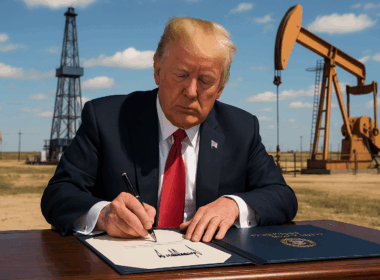
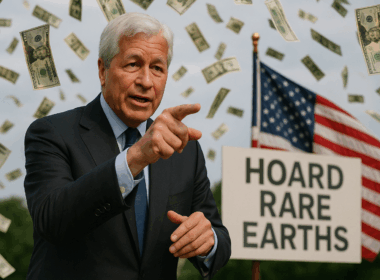
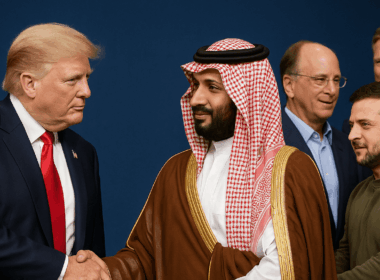


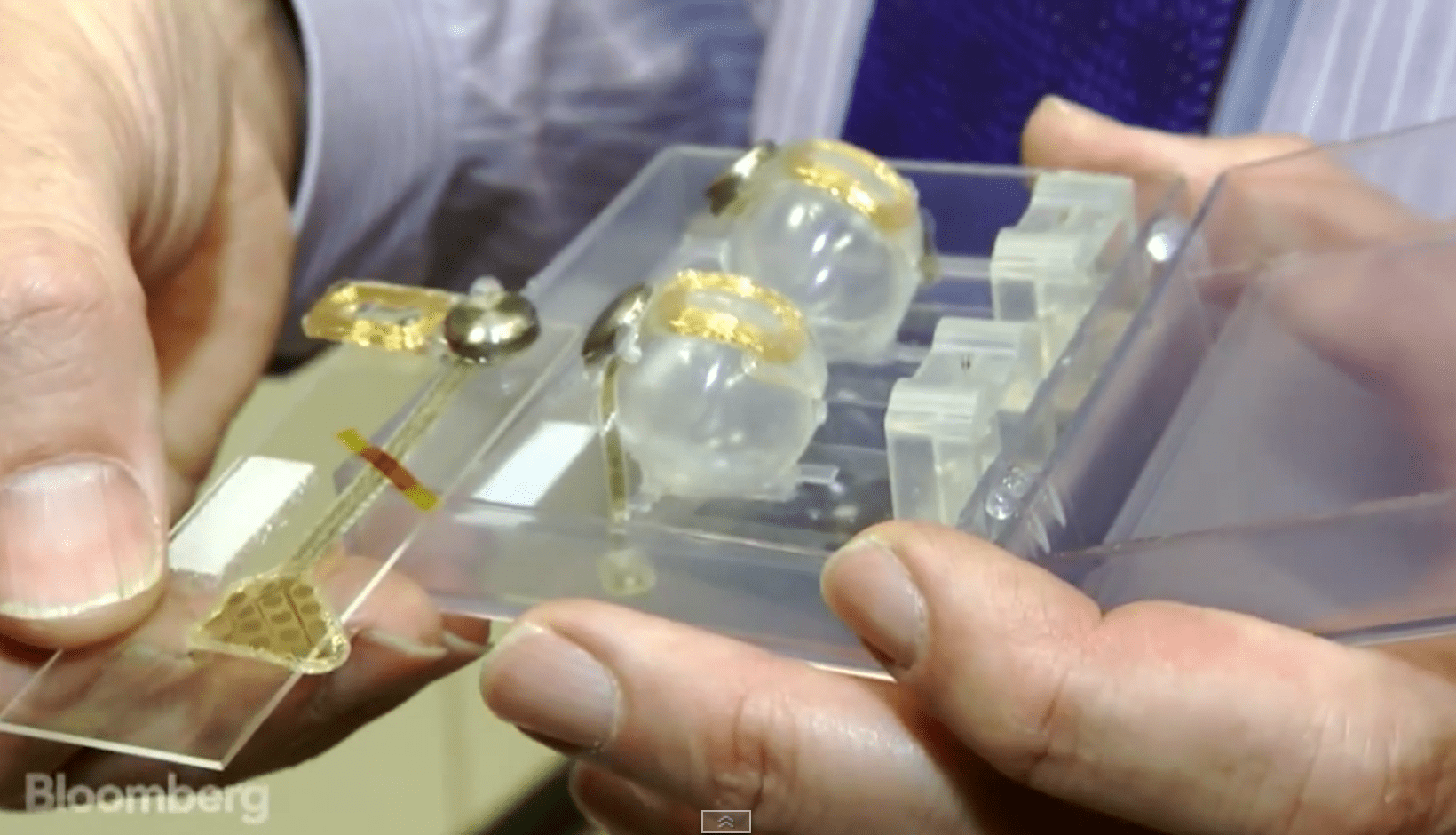
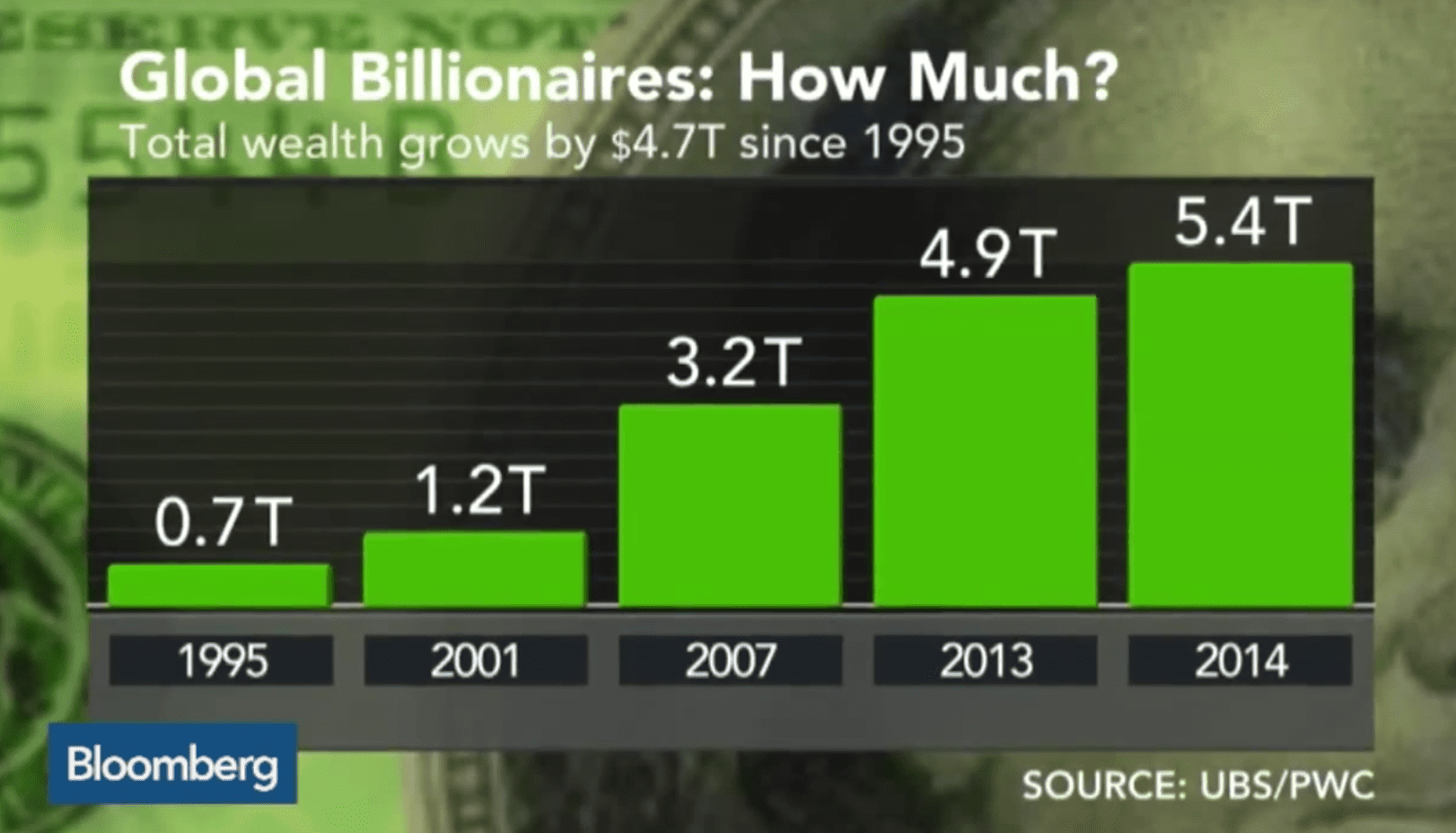
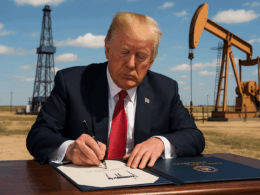
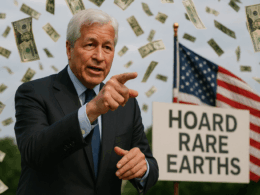
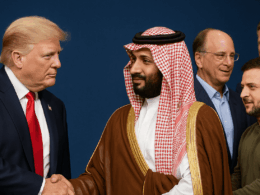

I don’t think Korea is dumb enough to kick-start a nuclear war, let alone one with the almighty U.S.A., however, I could be wrong about those kamikazes. Nonetheless, if they did, they would be digging their own graves fighting against NATO as well or 12 other countries, a losing proposition at that. I think the Korea military and their leader Kim Jong-un are just fear mongering pip-squeaks or ‘shit disturbers’ that demand to be respected and accomplishing that with threat tactics is laughable.
How can you write an article like this without mentioning the only nuclear armed , and constantly sabre waving country in the MidEast , Israel — not to mention slaughtering thousands of its captive populations every couple of years . It’s defense minister recently alluded to making a nuclear first strike on the Hiroshima and Nagasaki model against Iran .
Ron Paul has the right idea. Bring back all the military from around the world and stop trying to dominate the world at the cost of going broke.
Ron Reagan had the right idea.
Take the money saved and invest it in a star wars program. He was laughed at.
I have an idea.
Stop spending money overseas and build our defenses like China is doing. You don’t see them defending the world. You don’t see them sending foreign aid to any other countries. Meanwhile we are going broke while we wait for them to simply take us over. We have the brains to build superior technologies while China only knows how to copy ours and use it against us.
The answer is simple. Let the enemy (middle east et al) fight themselves while we build superior defense systems and Offense systems to be deployed only if and when we need them. It really is that simple. Of course George Bush and Barrack Obama at too stupid (or is it STOOOOPID) to see that. Time for people to take to the streets and call for the jailing of leaders who have become CRIMINALLY NEGLIGENT towards the people who elect them into power. Remember Benito Mussolini?
George Bush pursued small “tactical” nuclear weapons that could be used against Iran to destroy their nuclear facilities. It is definitely conceivable that the next president will be a Republican and will use these weapons to destroy Iran’s nuclear program.
@Realistic Thinker – Those comments are just embarassing and factually incorrect..
First thing to understand – China & North America are different beasts.. While North America (USA & Ontario, Canada ) whilts away from reckless abuse of money. China has played it smart.. They haven’t prespired money at the rate of the USA..
They do have their own issues however.. It’s nothing on the level of USA however. Most people either forget or ignore the fact that China is one of the biggest holders of USA debt. AKA they already own the USA!!
Essentially China already owns the rights to the US of A in the event of a default or if they feel USA can’t pay their debt (or tries to deflate the USD to pay them back)..
We talk about the invasion scenario but it’s already not required. I’ve had dreams about millions of chinese soldiers dropping in the Arctic via Russia. I use to think this could happen until I dug a little deeper in to China – their history, past and planned future. By the time the majority of millenials pass this version of China we once knew will be gone..
Let’s put up walls and kick anyone who disagrees with us out.. Then as we sit in global isolation
Which facts are incorrect? You have argued my case quite well but I don’t understand what part you disagree with. We are going broke and they are taking us over. Our leaders are simply Criminally Negligent for letting this happen.
None of this would be a problem if we weren’t basing our military in 150 countries, poking at the soft under-bellies of most of the other countries of the world. Look at the mess we are making in Ukraine while we’re poking at Russia. No wonder we’re becoming so hated by these nervous little republics. If we left them with their petty local quarrels, they’d go broke and think of the money we’d save.
THIS IS SO FUNNY. I AM CURRENTLY WATCHING RED DAWN. IF YOU ACTUALLY BELIEVE THAT KOREA AND IRAN ARE TRULY PARTNERING A NUCLEAR STRATEGY TO THREAT THE WEST, THEN I WILL SAY IF THEY DO ACHIEVE THIS GOAL, I WILL EAT MY GOLF SHOES.
You clearly are not a very bright person. First of all, its not Korea, its North Korea. Second, N. Korea and Iran have been working together for ages to threaten the West. This is fact. No one said anything about an invasion. And no one said they would achieve their goal.
So yes, you should eat your golf shoes. Some people really are idiots.
The West is focussed on Military might. We live with the assurance that the world’s bully will always be strongest and be able to ‘take out’ all comers. However this is no longer the truth. We are not prepared to face that USA military can no longer dominate.
Power and authority are not just projected by military force. One can gain power through loving action, faithfulness to international law and order, respecting other nations, mutual cooperation, trade and financing that is to everyone’s mutual benefit. The evil empire (UK, USA, Israel, Saudi Arabia) have not thought or acted like this. They have not listened to religious and humane ethical values.
Russian and China are extending their influence not through force, power and bullying but by financing mutually beneficial arrangements between nations. This is the new order, the new way and the future of Planet Earth. USA etc, represents the old and dying way of evil Victorian British Empire – colonialism.
Right now USA military power is basically held in check by the growing military power of other nations. These nations have good memories of the injustice done to them. WE can hope that they will forgive.
USA must let the New Order of mutual cooperation to operate without evil mischief and ugliness. This time has come. Military is being held in check. Time to reap the whirlwind of ugliness, evil and sinful actions America, Harper’s Canada, Israel, and UK. You have created enemies not friends and you must recant, repent, turn around before you turn into ‘hell on earth.’ Make love and trade, not war.
Right on George!! I see it just as you do.If the United Snakes really cared about the world the way they say they do there would be no reason for the 900 plus military bases around the globe.It’s all about America in the end. The US Military Industrial Complex,Central Banksters, and the top 1% have pushed Russia and China into a partnership without realizing what they were doing. They see the world as a multi-polar society not a uni-polar one the so called New World Order(USA) wants.As our debt based monetary system slowly collapses so will the funding the evil empire needs so badly to carry on their devious ways.When the dollar dies so will America. Hopefully the never ending wars will come to an end and we can start thinking about the whole planet as a group and a multi-polar society. Humanity will be number one and America will be down at the bottom of the list. Make love, and trade, NOT war!!
You are as nutty as a fruitcake.
In a matter of minutes not even an hour, in order to verify the offender, another nuclear missile – or many of them – will be on the air on the opposite direction.
Every one party realizes that he/she will be Dead within minutes or hours. That kind of mentality has prevailed so far and will continue. Except if and when ISSIS manage to acquire the means to do that, then the dynamics of the situation it will be entirely different.
(their God will not be Great any more for anyone……)
none are as blind as those that refuse to seeDear Sirs Are you all so gullible that you can’t see the writing bon the Wall.
First of all You must realize that Obama is a Muslim FANATIC whose goals are identical to Iran’s and all the other Muslim Fanatics, who are seeking to speed up the coming of the 12th Imam. The End of the world is their ultimate goal. That’s as plain as the nose on your face. Everyone knows that there can be no winners in an all out Nuclear War. Especially in an all out nuclear war, since all the factions will have nuclear weapons including delivery capability from all over the planet.
If you examine the actions of President OBAMS IT BECOMES OBVIOUS THAT HIS # 1 GOAL IS THE SESTRUCTION OF THE USA . the obvious fact that he was not born in the USA is secondary. A Muslim Fanatic is only seeking the coming of the 12 IMAM which would require the destruction of the world. So winning a Nuclear is not the Objective. and Destroying the Worlds only Super POWER CAN ONLY BE ACCOMPLISHED FROM WITHIN. PEN YOUR EYES
The US reminds me of Mike Tyson in his prime, an aggressive pit bull terrier ready to pounce and eat your heart out if you so much looked at him the wrong way.
The reality is, the world needs a big brother like that who is very intimidating and who won’t put up with the terrorists. The US fit the bill because fighting and protecting their allies is what they do best.
The military have superior satellite detection systems that not only gives them eyes to where Kim Jong-un is taking leak, but more importantly where nuclear weapons are located and sensing technology that detects radiation levels in determining how far along they are with their weapons programs.
If Korea and Iran were smart they should just remain the terrorists that they are, if they want to retain that place they call home.
I think being on the offensive is the right strategy for the US because not doing so only breeds more strength in terrorism and graver consequences everywhere.
Don’t mess with big brother Korea or Iran, just ask Iraq or Afghanistan. They know the consequences.
You seem to have left Israel out of the equation, who supposedly have 300 or so nuclear weapons at last count. Oh wait… I forgot they are not on the world radar as a possessing weapons of mass destruction !